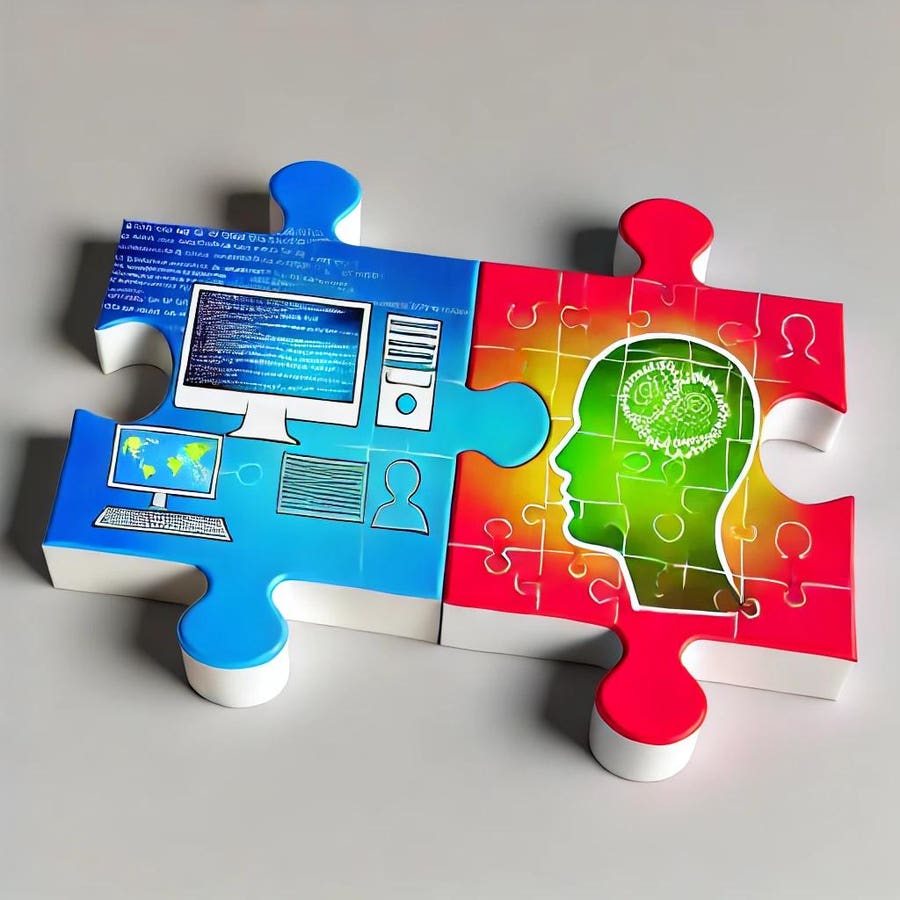Technology and logic connect with creativity and emotion.
ChatGPT
The rise of artificial intelligence (AI) has sparked a debate about its impact on freelance jobs, with some suggesting that machines are set to take over tasks traditionally performed by humans. However, this perspective simplifies the intricate dynamics of AI in the workforce. Rather than outright replacement, the future suggests a cooperative relationship where AI enhances human capabilities.
AI as an Enabler, Not a Replacement
The belief that AI will fully replace freelance jobs fails to capture the multifaceted role AI can play. Prominent companies like Invisible Technologies showcase how AI can augment human expertise. By fostering a collaborative environment, AI and human intelligence can tackle complex challenges and achieve outcomes that neither could accomplish alone. This synergy highlights AI’s potential to amplify rather than diminish human contributions in various fields.
The Rise of Internal Talent Marketplaces
Moreover, AI is revolutionizing talent management within organizations. Internal Talent Marketplaces (ITMs) leverage AI to align corporate needs with employee aspirations, leading to enhanced job satisfaction and reduced turnover rates. By matching candidates with roles that correspond to their skills and goals, ITMs promote a culture of continuous learning and development, portraying AI as a facilitator of effective human resource management rather than a job replacement tool.
The Open Talent Economy
The evolving workforce landscape is not characterized by a zero-sum game between humans and machines. As discussed in various industry analyses, the open talent economy signifies a significant transformation in how businesses access skilled professionals. Digital platforms allow companies to tap into a global network of freelancers, enabling them to utilize specialized skills flexibly and efficiently. This model encourages collaboration, showing that AI can enhance the workforce’s agility and effectiveness.
Freelancers Seek Flexibility, Not Replacement
Furthermore, the assertion that AI will wholly take over freelance roles overlooks the changing preferences of skilled workers. Many freelancers value autonomy and prefer project-based tasks over conventional employment. With businesses struggling to attract top talent for full-time positions, there is a clear demand for integrating freelancers into corporate strategies. AI-driven platforms can support this transition, enriching the collaboration between organizations and freelancers.
Complementarity in Human-AI Collaboration
Research conducted by Hemmer et al. (2024) at reputable institutions demonstrates that AI and humans can achieve Complementary Team Performance (CTP)—performing at levels unattainable by either individually. This research underscores the potential of leveraging distinctive strengths and information. For instance, in sectors like real estate appraisal and image classification, the collaboration between AI and human experts enhances overall decision-making, which illustrates the importance of designing AI systems that capitalize on human strengths.
Embracing a Collaborative Future
The anxiety surrounding AI’s potential to eliminate freelance opportunities stems from a misunderstanding of its role in the workforce. Rather than displacing human workers, AI serves as a powerful tool that, when merged with human creativity and ingenuity, promises enhanced efficiencies, innovation, and improved job satisfaction. Embracing AI as an ally in human potential will allow organizations to not only navigate the complexities of the modern workforce but also evolve freelance roles into more valuable and fulfilling opportunities.
The Future of Work: Embracing AI as a Collaborative Partner
As artificial intelligence (AI) continues to evolve, its impact on the workforce is becoming increasingly apparent. Contrary to common misconceptions, AI is not here to replace human jobs but to enhance human capabilities. This article explores how AI can serve as a powerful ally in shaping a more dynamic and collaborative work environment.
AI: A Catalyst for Human Potential
AI should be viewed as a facilitator that complements human skills rather than a threat to employment. When integrated with human expertise, AI can tackle complex challenges that neither can handle alone. Companies like Invisible Technologies exemplify this synergy, demonstrating how advanced AI can be woven together with skilled labor to achieve extraordinary results.
Evolving Talent Management through AI
Organizations are rethinking their talent management strategies in the wake of AI adoption. Internal Talent Marketplaces (ITMs) are becoming a staple in modern workplaces, helping to align employee skills with organizational needs. This approach not only boosts job satisfaction but also actively reduces turnover by fostering a culture of continuous learning and adaptability, showcasing how AI can enhance human resource practices.
The Open Talent Economy: Redefining Skill Utilization
The landscape of work is shifting towards an open talent economy, where companies can leverage a global pool of freelancers. Digital platforms enable organizations to access specialized skills as needed, promoting a more flexible and efficient workforce. This paradigm shift is not about eliminating jobs but rather about enriching the workforce through AI-human collaboration.
Freelancers Thrive in a Flexible Landscape
As the workplace continues to evolve, many skilled freelancers prioritize flexibility and autonomy over traditional employment structures. They often favor project-based work that allows for diverse experiences. Companies must adapt to these changing preferences by integrating freelancers into their workforce strategies, using AI platforms to enhance overall productivity and job satisfaction.
Nature of Complementary Team Performance
Recent research indicates that AI and humans can achieve exceptional outcomes through complementary teamwork. By leveraging diverse skills and information, organizations can optimize performance in various fields such as real estate and data analysis. For instance, when humans provide contextual knowledge, AI’s data-driven insights can be significantly enhanced, leading to better decision-making and project outcomes.
Adopting a Forward-Thinking Approach
The fear surrounding AI’s potential to replace jobs is largely based on outdated perceptions. Instead, organizations should embrace AI as a vital tool for enhancing human productivity and creativity. By integrating AI into flexible workforce strategies, businesses can thrive in an increasingly digital environment, paving the way for more fulfilling and high-value career opportunities.


